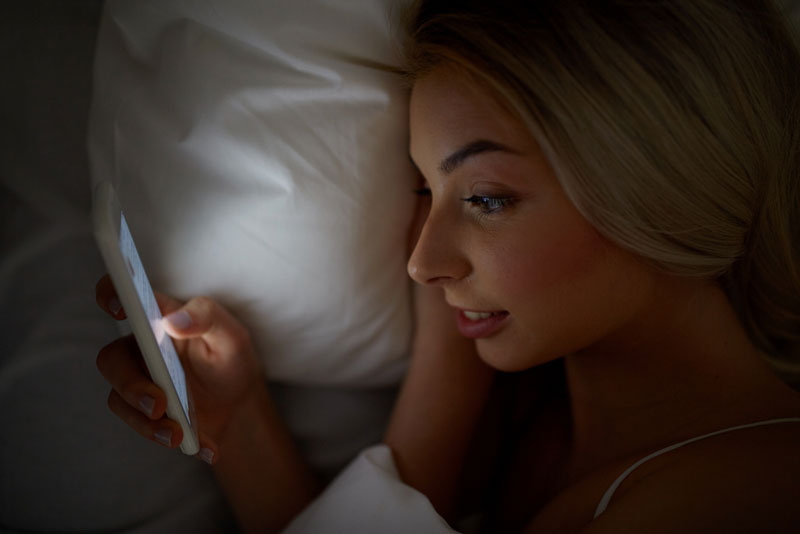Docs Diagnose Smartphone 'Blindness' in 2 Women

For two women in the United Kingdom, mysterious vision problems that happened only at night or early in the morning turned out to have a rather innocuous cause: looking at a smartphone in the dark.
The cases, which are detailed in a new report, show the short-term vision problems that can occur when people look at a bright smartphone screen in a dark room.
In the first case, a 22-year-old woman told her eye doctor that she had trouble seeing out of her right eye at night while she was in bed. These episodes happened multiple times a week for a year. Each time, she said she could only see the outlines of objects with her right eye, although her vision was fine in her left eye, and in both eyes the following day. An eye exam showed her vision was normal, and she had no signs of a blood clot or other conditions that could cause short-term vision loss, the doctors said.
In the second case, a 40-year-old woman told doctors that she couldn't see out of one eye when she woke up in the early morning, before sunrise. This vision problem lasted about 15 minutes, and happened on and off for six months, the report said.
In both cases, doctors later discovered that these vision problems happened only after the women had viewed their smartphone for several minutes, while lying on their side in bed. [5 Odd Ways Your Tech Devices May Injure You]
The doctors hypothesized that these problems happened because the patients, without realizing it, were looking at their phone with just one eye, with the other eye blocked by a pillow when they were lying down. In this situation, one eye (blocked by the pillow) becomes adapted to the dark, while the other eye (looking at the smartphone) is adapted to the light, the doctors said. When the smartphone is turned off, the light-adapted eye is perceived to be "blind," until it also adjusts to the dark, the doctors said.
"What the patients are aware of is the differing visual experience between a light-adapted eye … and a dark-adapted eye … at low ambient light levels," the doctors wrote in the report, published today (June 22) in the New England Journal of Medicine. "As they can see well with the dark-adapted eye, it seems to them that they have lost vision in the eye which — a moment ago — was viewing the smartphone normally."
Get the world’s most fascinating discoveries delivered straight to your inbox.
The patients were asked to experiment looking at their phone with both eyes, and also with each eye individually. The patients said they did not experience symptoms when looking at their phone with both eyes, and if they looked at their phone with one eye, the symptoms were always in the eye that had been viewing the smartphone, the report said.
The doctors also tried their own experiment, looking at their smartphones with one eye in the dark, and found that their vision was considerably reduced in one eye, and took several minutes to recover.
With smartphones now used around the clock, and screens increasing in brightness, according to the researchers, doctors will likely see more cases like these in the future, the report said. But by asking patients detailed questions, doctors should now be able to figure out if a smartphone is involved in vision problems.
"Our cases show that detailed history-taking and an understanding of retinal physiology can reassure both patient and doctor [in these cases], and can avoid unnecessary anxiety and costly investigations," the doctors wrote.
Original article on Live Science.

Rachael is a Live Science contributor, and was a former channel editor and senior writer for Live Science between 2010 and 2022. She has a master's degree in journalism from New York University's Science, Health and Environmental Reporting Program. She also holds a B.S. in molecular biology and an M.S. in biology from the University of California, San Diego. Her work has appeared in Scienceline, The Washington Post and Scientific American.


